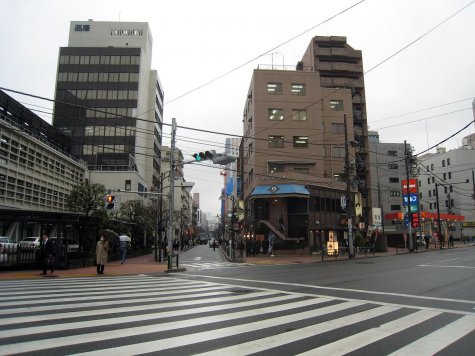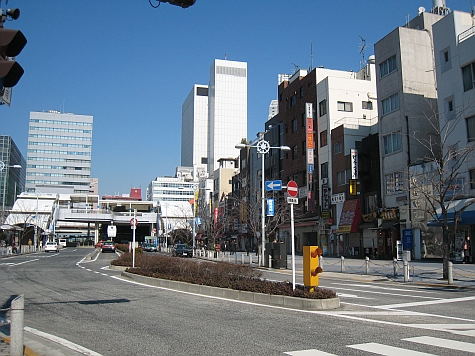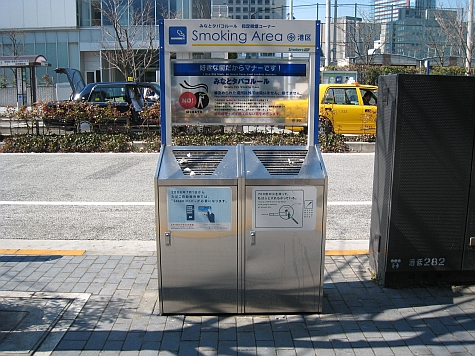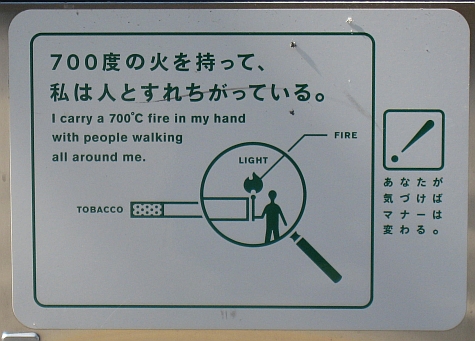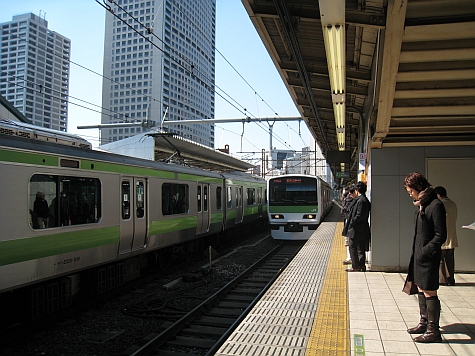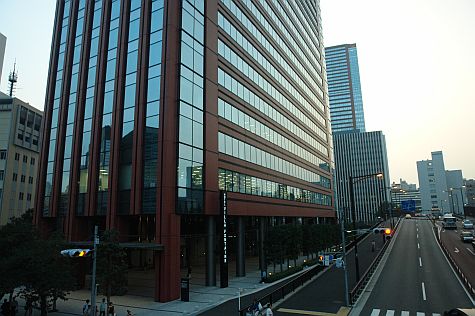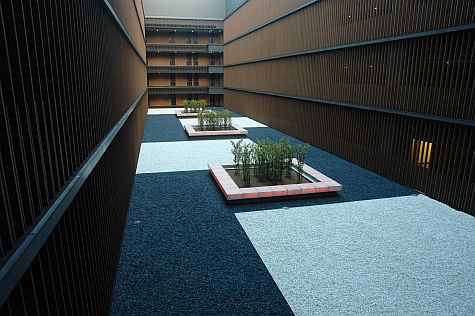The area is called Shinshiba. Looking west, the towers — it’s hard to judge whether they’re offices or apartments — are built up to the edge of the canal.
To these southwest, the pedestrian bridge is painted pink.
I followed the main road to walk south over a bridge. On subsequent walks, I discovered a Hanamasa supermarket further down this road. Beyond that, there’s more highrises.
Following the main road, I turned east at the pedestrian crosswalk at the traffic lights.
Ot the souteast corner of the next major intersection, the old location of the Shibaura Institute of Technology has been vacated and not yet replaced with a new tenant. Continue reading “2009/02/23 Shinshiba, Tokyo“




